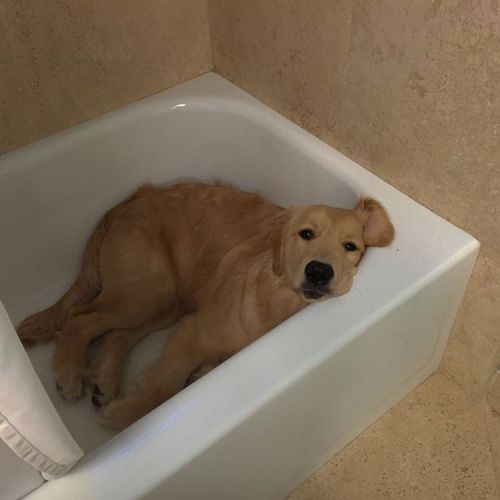Ms. Candy, The Whole Point Was To Make Her Look Less…distracting.




Ms. Candy, the whole point was to make her look less…distracting.
More Posts from 7even11eleven-blog and Others
yeah i would’ve knocked him tf out too lmao

Hey babes! As requested, here’s a roundup of my favorite study tips that I’ve picked up over the years. Happy studying!
studying for exams
Create a study group and meet regularly (not just before exams!)
“Teach” the material to someone – your pet works well!
Keep a list in the front of your notebook/binder of topics or points that seem important enough to be on the exam, that confuse you, or that you’re interested in so you can go back and study them.
Study a little over a long period when you can, instead of cramming for an entire exam in one night.
Create a “cheat sheet” of important information for studying on the go.
Try the Pomodoro method to keep from getting burnt out.
Try creating a timetable for studying so you don’t spend too long on a certain subject and run out of time for the others.
Knock out your least favorite subject first, so you can have the rest of the day to work on more enjoyable subjects and relax.
Create a study guide for the class using Google Docs that you can all contribute to.
If you’re unclear about something, Google it. There’s more than likely a video that can explain it more clearly than your textbook.
Keep a running list of questions to ask during office hours, & actually go!
Study in a public place (the library, a coffee shop) so that you’re less likely to get distracted watching cat videos knowing people can see what you’re doing.
Get plenty of rest the night before an exam! Cramming is not worth it.
homework tips
Write everything down, even if you think you’ll remember it.
Keep a planner and check it first thing in the morning.
Do the work for your least favorite class first so that it’s out of the way.
Start early. Way earlier than you have to. That way you have time for delays, to start over if you have to, or to take a night off to go to a party.
If it’s something quick, like a worksheet, do it as soon as it’s assigned.
If you have a long break between classes, use it to work on small assignments that you can get out of the way.
For big projects, like papers and presentations, break it up into smaller pieces. “Write thesis” is a lot less daunting than “write 8 page paper”.
Do homework before you study, so you’ll know what you’re confused about and need to pay more attention to.
If there’s an option to buy an ebook rather than a physical copy of the textbook, do it. Not only is it usually cheaper, but it frees up space in your bag and you can search for specific terms easily.
If you have a lot of work to catch up on, set aside a block of time to knock it all out at once (with breaks, of course).
If all the homework for a class is due at the end of the semester, give yourself due dates for the individual assignments so you don’t put it off and have to do it all at once.
Install a site blocker so you don’t get distracted from your work.
If you have an online class, schedule a regular time to work on it as if it were a traditional class.
Don’t just Google your way through the homework! It may save time now, but it’ll only make things harder when it’s time for exams.
even more tips!!
More Study Tips
Time Management
Intensive Revision (Cramming)
Public Speaking
Writing Papers Quickly
Study Habits
Final Exams

Solar System: Things to Know This Week
We love Lucy—our spacecraft that will visit the ancient Trojan asteroids near Jupiter, that is. This week, let us count the ways this 2021 mission could revolutionize what we know about the origins of Earth and ourselves.
1. Lucky Lucy

Earlier this year, we selected the Lucy mission to make the first-ever visit to a group of asteroids known as the Trojans. This swarm of asteroids orbits in two loose groups around the Sun, with one group always ahead of Jupiter in its path, and the other always behind. The bodies are stabilized by the Sun and Jupiter in a gravitational balancing act, gathering in locations known as Lagrange points.
2. Old. Really, Really Old

Jupiter’s swarms of Trojan asteroids may be remnants of the material that formed our outer planets more than 4 billion years ago—so these fossils may help reveal our most distant origins. “They hold vital clues to deciphering the history of the solar system,” said Dr. Harold F. Levison, Lucy principal investigator from Southwest Research Institute (SwRI) in Boulder, Colorado.
3. A Link to The Beatles

Lucy takes its name from the fossilized human ancestor, called “Lucy” by her discoverers, whose skeleton provided unique insight into humanity’s evolution. On the night it was discovered in 1974, the team’s celebration included dancing and singing to The Beatles’ song “Lucy In The Sky With Diamonds.” At some point during that evening, expedition member Pamela Alderman named the skeleton “Lucy,” and the name stuck. Jump ahead to 2013 and the mission’s principal investigator, Dr. Levison, was inspired by that link to our beginnings to name the spacecraft after Lucy the fossil. The connection to The Beatles’ song was just icing on the cake.
4. Travel Itinerary
One of two missions selected in a highly competitive process, Lucy will launch in October 2021. With boosts from Earth’s gravity, it will complete a 12-year journey to seven different asteroids: a Main Belt asteroid and six Trojans.
5. Making History

No other space mission in history has been launched to as many different destinations in independent orbits around the Sun. Lucy will show us, for the first time, the diversity of the primordial bodies that built the planets.
6. What Lies Beneath
Lucy’s complex path will take it to both clusters of Trojans and give us our first close-up view of all three major types of bodies in the swarms (so-called C-, P- and D-types). The dark-red P- and D-type Trojans resemble those found in the Kuiper Belt of icy bodies that extends beyond the orbit of Neptune. The C-types are found mostly in the outer parts of the Main Belt of asteroids, between the orbits of Mars and Jupiter. All of the Trojans are thought to be abundant in dark carbon compounds. Below an insulating blanket of dust, they are probably rich in water and other volatile substances.
7. Pretzel, Anyone?

This diagram illustrates Lucy’s orbital path. The spacecraft’s path (green) is shown in a slowly turning frame of reference that makes Jupiter appear stationary, giving the trajectory its pretzel-like shape.
8. Moving Targets

This time-lapsed animation shows the movements of the inner planets (Mercury, brown; Venus, white; Earth, blue; Mars, red), Jupiter (orange), and the two Trojan swarms (green) during the course of the Lucy mission.
9. Long To-Do List
Lucy and its impressive suite of remote-sensing instruments will study the geology, surface composition, and physical properties of the Trojans at close range. The payload includes three imaging and mapping instruments, including a color imaging and infrared mapping spectrometer and a thermal infrared spectrometer. Lucy also will perform radio science investigations using its telecommunications system to determine the masses and densities of the Trojan targets.
10. Dream Team
Several institutions will come together to successfully pull off this mission. The Southwest Research Institute in Boulder, Colorado, is the principal investigator institution. Our Goddard Space Flight Center will provide overall mission management, systems engineering, and safety and mission assurance. Lockheed Martin Space Systems in Denver will build the spacecraft. Instruments will be provided by Goddard, the Johns Hopkins Applied Physics Laboratory and Arizona State University. Discovery missions are overseen by the Planetary Missions Program Office at our Marshall Space Flight Center in Huntsville, Alabama, for our Planetary Science Division.
Make sure to follow us on Tumblr for your regular dose of space: http://nasa.tumblr.com


Miles Morales Easter Eggs in Spider Man Homecoming



I’M CRYING, THIS IS SO CUTE
-
 mantis-lizbian liked this · 10 months ago
mantis-lizbian liked this · 10 months ago -
 jamalexlee reblogged this · 11 months ago
jamalexlee reblogged this · 11 months ago -
 blueocelot reblogged this · 11 months ago
blueocelot reblogged this · 11 months ago -
 blueocelot liked this · 11 months ago
blueocelot liked this · 11 months ago -
 museumticket reblogged this · 1 year ago
museumticket reblogged this · 1 year ago -
 halfbloodliz liked this · 2 years ago
halfbloodliz liked this · 2 years ago -
 superheroessource reblogged this · 2 years ago
superheroessource reblogged this · 2 years ago -
 madsmaps liked this · 2 years ago
madsmaps liked this · 2 years ago -
 vsldvivi liked this · 3 years ago
vsldvivi liked this · 3 years ago -
 sarcasm-myfriend reblogged this · 3 years ago
sarcasm-myfriend reblogged this · 3 years ago -
 sarcasm-myfriend liked this · 3 years ago
sarcasm-myfriend liked this · 3 years ago -
 inthemiddle88 reblogged this · 3 years ago
inthemiddle88 reblogged this · 3 years ago -
 folksonomy reblogged this · 3 years ago
folksonomy reblogged this · 3 years ago -
 newrrrt liked this · 4 years ago
newrrrt liked this · 4 years ago -
 rohrkatze reblogged this · 4 years ago
rohrkatze reblogged this · 4 years ago -
 nevermoreak4 liked this · 4 years ago
nevermoreak4 liked this · 4 years ago -
 crookeddazestudent-us liked this · 4 years ago
crookeddazestudent-us liked this · 4 years ago -
 chocolatecatpolice liked this · 4 years ago
chocolatecatpolice liked this · 4 years ago -
 muchadoaboutsnap reblogged this · 4 years ago
muchadoaboutsnap reblogged this · 4 years ago -
 tygert liked this · 4 years ago
tygert liked this · 4 years ago -
 timidrose3791 liked this · 4 years ago
timidrose3791 liked this · 4 years ago -
 mage-hecked liked this · 4 years ago
mage-hecked liked this · 4 years ago -
 cultiest liked this · 4 years ago
cultiest liked this · 4 years ago -
 wiseprunecreatorpony liked this · 4 years ago
wiseprunecreatorpony liked this · 4 years ago -
 abrilelectralighwood liked this · 4 years ago
abrilelectralighwood liked this · 4 years ago -
 bethefruit liked this · 4 years ago
bethefruit liked this · 4 years ago -
 miggylejiggy liked this · 4 years ago
miggylejiggy liked this · 4 years ago -
 betteryoudietheni liked this · 4 years ago
betteryoudietheni liked this · 4 years ago -
 oceanbluemew liked this · 4 years ago
oceanbluemew liked this · 4 years ago -
 alice42d liked this · 4 years ago
alice42d liked this · 4 years ago -
 batdonthavenicknamecallmequinn liked this · 4 years ago
batdonthavenicknamecallmequinn liked this · 4 years ago -
 magical-gifts liked this · 5 years ago
magical-gifts liked this · 5 years ago -
 korrasami-did-the-thing reblogged this · 5 years ago
korrasami-did-the-thing reblogged this · 5 years ago -
 korrasami-did-the-thing liked this · 5 years ago
korrasami-did-the-thing liked this · 5 years ago -
 clockwork--fandoms liked this · 5 years ago
clockwork--fandoms liked this · 5 years ago -
 multionesworld liked this · 5 years ago
multionesworld liked this · 5 years ago -
 crudforbrains reblogged this · 5 years ago
crudforbrains reblogged this · 5 years ago -
 gluingrosesontoflatbeds liked this · 5 years ago
gluingrosesontoflatbeds liked this · 5 years ago -
 multifan007 liked this · 5 years ago
multifan007 liked this · 5 years ago -
 gay-sad-and-fuckin-rad liked this · 5 years ago
gay-sad-and-fuckin-rad liked this · 5 years ago

![Sebastian Stan At The D23 Expo. [07.15.2017]](https://64.media.tumblr.com/ec4cc8f982474164933caa6ff1be2fad/tumblr_ot5h4ubEka1ugigzio1_400.gif)
![Sebastian Stan At The D23 Expo. [07.15.2017]](https://64.media.tumblr.com/cf259dfd41fc11957e9b9df0c540d653/tumblr_ot5h4ubEka1ugigzio2_400.gif)
![Sebastian Stan At The D23 Expo. [07.15.2017]](https://64.media.tumblr.com/4d20a6571b8b5fd4cfbd5bd837e77b98/tumblr_ot5h4ubEka1ugigzio3_400.gif)
![Sebastian Stan At The D23 Expo. [07.15.2017]](https://64.media.tumblr.com/3961a01125b2a0ec8608afc29ba74014/tumblr_ot5h4ubEka1ugigzio4_400.gif)
![Sebastian Stan At The D23 Expo. [07.15.2017]](https://64.media.tumblr.com/f47f8744b82d78e4a979d30137c75600/tumblr_ot5h4ubEka1ugigzio5_400.gif)
![Sebastian Stan At The D23 Expo. [07.15.2017]](https://64.media.tumblr.com/ebe7b7907cb80eda0db4241076a630da/tumblr_ot5h4ubEka1ugigzio6_400.gif)

